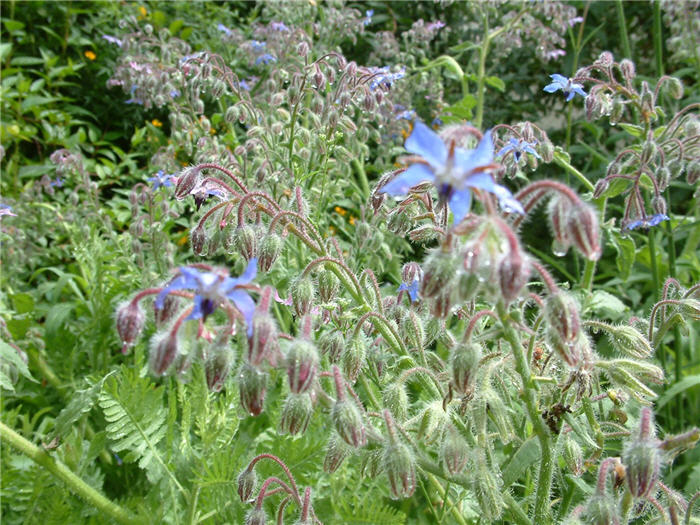| Botanical Name: Borago officinalis | |
| Common Name: Borage |

-
Anatomy
-
Culture
-
Design
Plant Type
Annual, Herb
Height Range
1-3'
Flower Color
Blue
Flower Season
Summer
Leaf Color
Grey Green
Bark Color
n/a
Fruit Color
n/a
Fruit Season
n/a
Sun
Full
Water
Low, Medium
Growth Rate
Fast
Soil Type
Sandy, Clay, Loam, Rocky, Unparticular
Soil Condition
Average, Poor, Dry
Soil pH
Neutral
Adverse Factors
Attracts Bees
Design Styles
English Cottage, Formal, Mediterranean, Ranch, Spanish
Accenting Features
Fragrance
Seasonal Interest
Summer
Location Uses
Entry, Perennial Border
Special Uses
Cut Flowers, Small Spaces
Attracts Wildlife
n/a
Information by: Stephanie Duer
Photographer:
Photographer:
-
Description
-
Notes
Borage is an annual herb prized for its intensely blue, star-shaped flowers that bloom in summer, and it's edible leaves that have a fragrance and taste of cucumber. Young ,tender leaves may be eaten raw, older leaves are best steamed or sauteed (like spinach). The plant can grow 1 to 3 feet tall and half as wide, though it is a little sprawlish in nature and may take up a bit more room.
Grow in full sun to light shade in well drained soil. Tolerates poor, dry soils. Though an annual, under happy conditions it will reseed in the garden. Seeds can be started indoors, or sown outdoors in spring. Though it has no pest problems, powdery mildew may be an issue if overhead-watered, or over-watered in general.